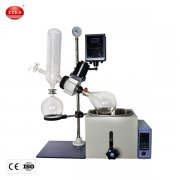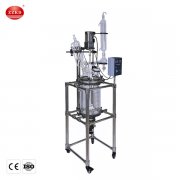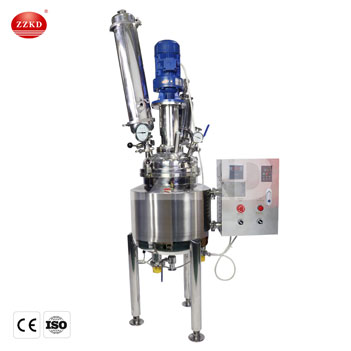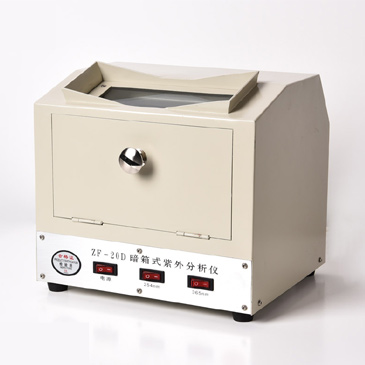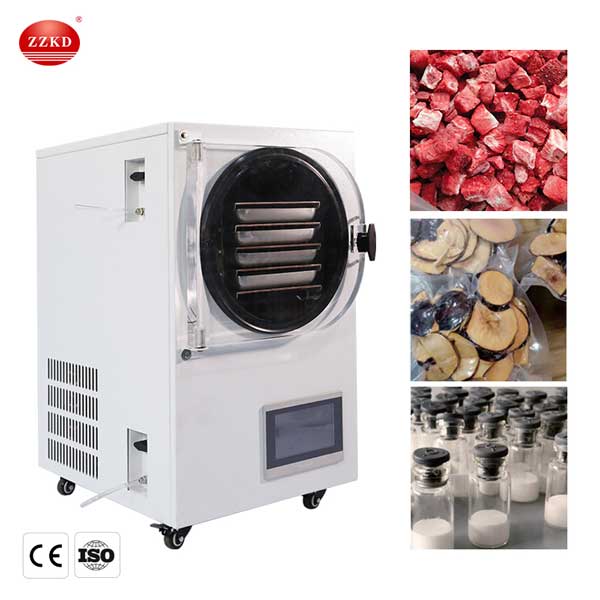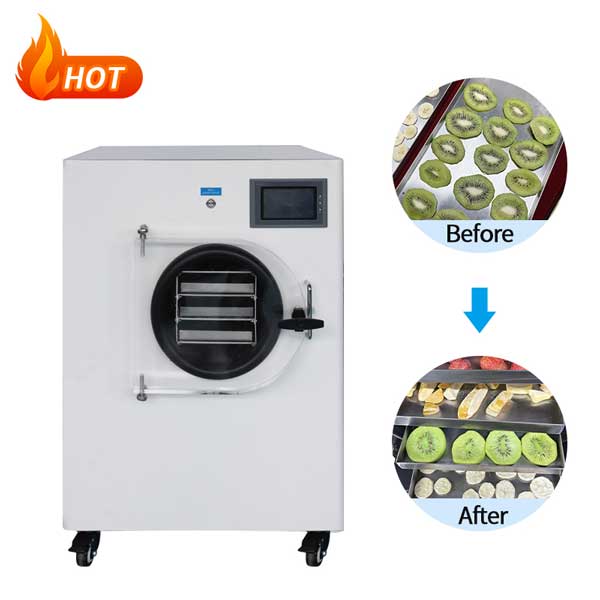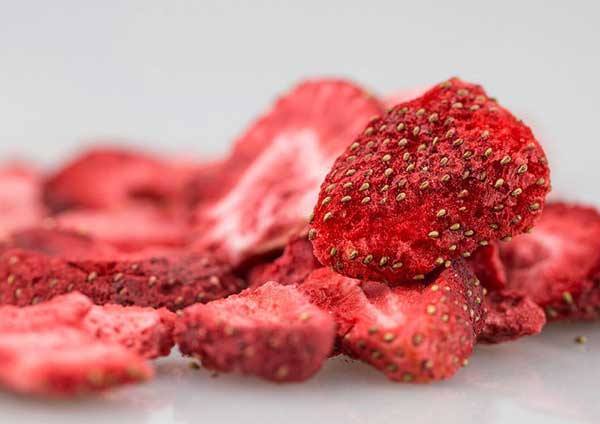The experimental lyophilizer freeze dryer is suitable for scientific research such as life science, medicine, food science, aquatic science, biochemistry, environmental science, archaeology, etc., and can meet the needs of the exploration and application of freeze-drying technology. The main purpose of freeze drying is to dry and store easily dehydrated products. After adding water, the properties of the raw materials can be restored without affecting the biological activity;
Freeze dry candy machines (lyophilizer freeze dryers) are very common in daily life, but many people are not very clear about how to use freeze dryers. I don’t know much about the precautions of the freeze dryer. The following is a brief introduction to the operation and use of the freeze dryer (freeze dryer), the precautions for use and the technological process.
How to use lyophilizer freeze dryer:
1. Turn on the main power switch on the left side of the lyophilizer chassis, and the air pressure digital display is atmospheric pressure 110pk;
2. Press and hold the main switch on the control panel of the freeze dryer for more than three seconds, and the temperature digital display will show the actual temperature;
3. Start the freeze dryer (lyophilizer freeze dryer) and pre-cool the refrigerator for more than 30 minutes;
4. Put the sample into the sample holder, cover the glass cover and start the vacuum pump;
5. After the digital display of the air pressure of the lyophilizer freeze dryer is stable, record the temperature and air pressure;
6. Record the temperature and air pressure values before shutdown;
7. Press and hold the inflation valve on the control panel of the
DZF- 6050 vacuum drying oven
8. (lyophilizer freeze dryer) and immediately turn off the vacuum pump;
8. When the air pressure digital display is atmospheric pressure, open the glass cover and take out the sample;
9. Turn off the freezer of the freeze dryer. Press and hold the main switch key for more than three seconds and then turn off the main power switch;
10. After the ice is completely turned into water, open the water outlet valve on the left side of the chassis to release the water. Clean the inner wall of the cold trap with a dry cloth and cover with a large piece of filter paper to prevent dust.
Matters needing attention when using a freeze dryer:
1. The surface area of the sample prepared by the lyophilizer should be expanded as much as possible. It shall not contain acid-base substances and volatile solvents;
2. Note that the freeze dryer (lyophilizer freeze dryer) cold trap is about minus 65 degrees, which can be used as a low temperature refrigerator. But wear thermal gloves to prevent injury;
3. Before starting the vacuum pump, check whether the water outlet valve is tightened, whether the inflation valve is closed, and whether the contact surface between the glass cover and the rubber ring is clean and free of dirt, and is well sealed;
4. Under normal circumstances, the
freeze dry machine for candy (lyophilizer freeze dryer) shall not be used continuously for more than 48 hours;
5. During the freezing process of the sample, the temperature gradually decreases. The drying time can be shortened by taking the sample out to warm up for a period of time and then continuing to dry.
The specific process of the lyophilizer freeze dryer:
1. Pretreatment
Different materials to be dried have different pretreatment methods. But in order to obtain a safe and hygienic product, it is necessary to sterilize the freeze-drying equipment. Commonly used disinfection methods are: heat sterilization, gas sterilization and radiation sterilization.
2. Vacuum freeze drying (freeze drying)
The vacuum freeze-drying stage is generally divided into a pre-freezing stage, a sublimation drying stage and a desorption drying stage.
Pre-frozen
Pre-freezing is to solidify the free water of the material, giving the dried product the same shape as before drying, preventing irreversible changes such as foaming, shrinking, concentration and solute movement during vacuum drying, and reducing the solubility of the substance due to temperature drop. and changes in the characteristics of material life. Pre-freezing plays a crucial role in the quality of freeze-dried products and two basic requirements must be met: a suitable cooling rate and a suitable final temperature.
The rate of cooling depends on: the temperature of the cold source, the number of samples, container volume and surface area, and heat transfer between the sample container and the cold environment. If the cooling rate is too fast, it will cause intracellular icing, and if the cooling rate is too slow, the living body will be injured and die. Quick-frozen products have uniform appearance and consistent color. Small ice crystals cause less protein denaturation and less coagulation. For products with living substances, quick-frozen mortality is small and freezing time is saved.
The final temperature of pre-freezing should be lower than the eutectic point temperature or glass transition temperature of the solution to ensure that the solution of suspended biological material can be completely frozen, otherwise, a small amount of liquid will "boil" to generate bubbles when vacuuming The surface of the product is uneven. For products that are not very demanding, the final temperature of pre-freezing should only be lower than the eutectic point temperature, generally 5 ℃ to 10 ℃ lower than the eutectic point temperature.
Sublimation drying stage
Sublimation drying is also called primary drying. The frozen product is heated in a closed vacuum container, so that the ice crystals are sublimated into water vapor to escape, thereby dehydrating and drying the product. Drying is gradually pushed inward from the outer surface, and the voids left after the sublimation of the ice crystals become the escape channels for the sublimated water vapor. The first stage of drying is complete when all the ice crystals have been removed, at which point about 90% of the total moisture has been removed.
However, during the drying process, the remaining part of the material should always be kept in a frozen state. If the temperature is too high, the ice crystals will melt, so the temperature of the frozen layer of the article should be lower than its eutectic temperature. In addition, the temperature of the dried layer cannot exceed the disintegration temperature by heating too fast. The disintegration of the dried product will affect the passage of water vapor from the freeze-dried layer, which will lead to partial melting of the product.
Analytical drying stage
Also called secondary drying. After the end of the first stage, there is still a part of water adsorbed on the capillary walls and polar groups of the dry substance, which is not frozen. After the second stage of drying, the residual moisture content in the product is generally between 0.5% and 4%. The analysis time is determined by the variety and shape of the product; the requirements of the residual water content; the performance of the freeze dryer and other factors.
3. Post-processing
Different products have different post-processing methods, and the impact of the environment on the dried products should be minimized. For biological products, it is generally necessary to pack in a vacuum environment or fill the drying room with nitrogen and then pack.

 Products
Products





